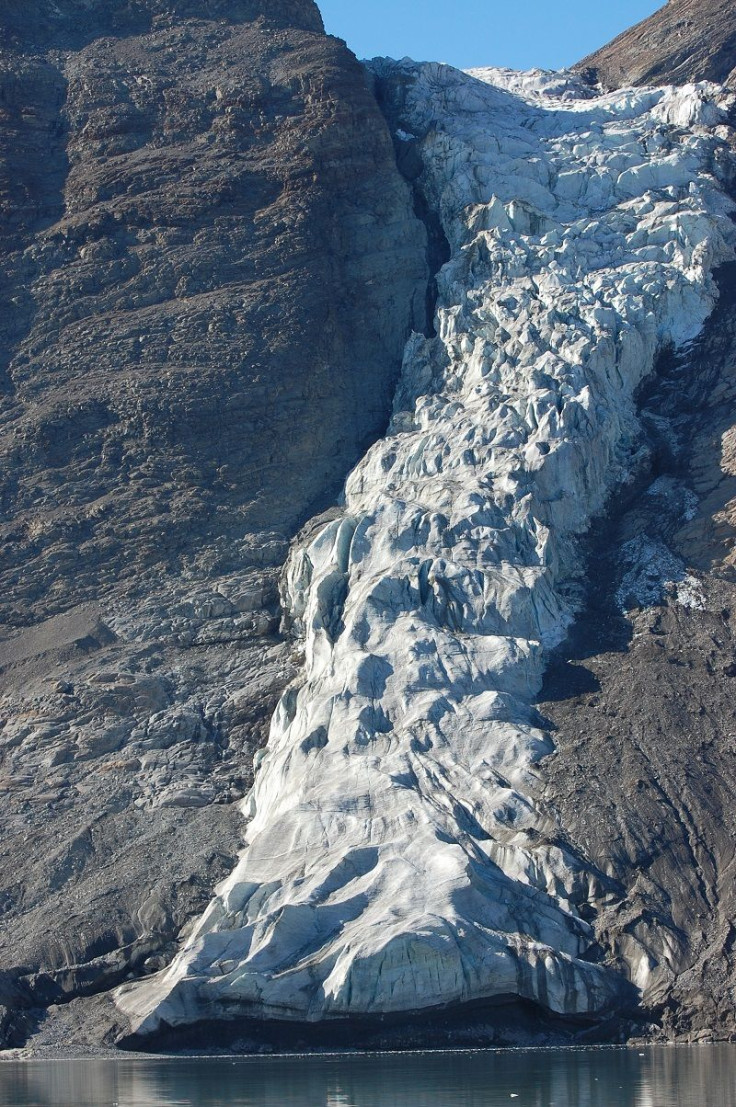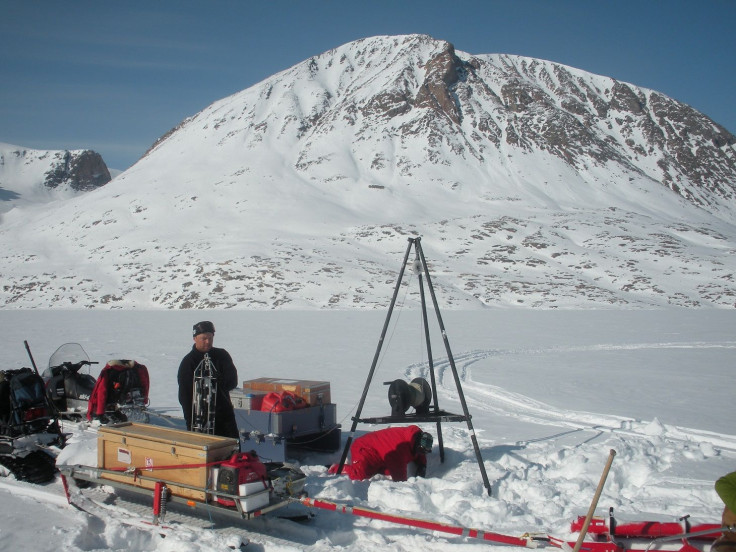Earth’s Internal Heat Melting Greenland’s Ice Sheets, Sending Glaciers Into The Sea

At a time when polar ice caps and glaciers around the world are already threatened by the effects of climate change, which has been exacerbated by human activity, scientists have found evidence of another factor — an entirely natural one — that is melting the ice sheets in Greenland. This factor is Earth’s internal heat, reaching up through the water deep below the fjords in northeastern Greenland.
The temperature of our planet’ core is estimated to be about 6,000 degrees Celsius, which is similar to the sun’s surface (the sun’s core is a blistering 15 million degrees Celsius and its atmosphere, called corona, is also millions of degrees hot). This heat is most evident on Earth’s surface in the form of volcanic eruptions and hot water geysers or hot springs.
Fjords, which are formed due to the abrasion of bedrock by the movement of a glacier, often have their bedrock below sea level. Researchers from the Arctic Research Centre (ARC) in Aarhus University, Denmark, and the Greenland Institute of Natural Resources studied fjord called Young Sound, which also has many hot springs, for over 10 years. And they found that the heat coming from under the fjords is causing glaciers on the ice sheet to slide toward the sea.
“Northeast Greenland has several hot springs where the water becomes up to 60 degrees [Celsius] warm and, like Iceland, the area has abundant underground geothermal activity. … There is no doubt that the heat from the Earth’s interior affects the movement of the ice, and we expect that a similar heat seepage takes place below a major part of the ice cap in the northeastern corner of Greenland,” Soren Rysgaard of ARC, who headed the investigations, said in a statement Monday.
Estimating the amount of heat emanating from Earth’s interior — called geothermal heat flux — is tricky to do when it comes to localizing it below glaciers. The researchers chose the exact spot to study because the regions have several glaciers connected to the same ice sheet, and focused on an area which is an isolated basin within Young Sound. The depth of the basin ranges between 200 and 300 meters, and the researchers measured the heating of deep water over 10 years.
Based on the data they collected, the scientists estimated the heat absorbed by the fjord was about 100 megawatt per square meter, which “corresponds to a 2-megawatt wind turbine sending electricity to a large heater at the bottom of the fjord all year round.”

Heat from the fjord also heats up the bottom of the glacier, melting the underside, which allows them to slide more easily over the rough terrain on their otherwise slow and sluggish journey to the sea.
But this is only one of the factors affecting the loss of ice from the sheets in Greenland, Rysgaard pointed out.
“It is a combination of higher temperatures in the air and the sea, precipitation from above, local dynamics of the ice sheet and heat loss from the Earth’s interior that determines the mass loss from the Greenland ice sheet,” Rysgaard explained.
The study is set to appear in the journal Scientific Reports.
© Copyright IBTimes 2024. All rights reserved.




















